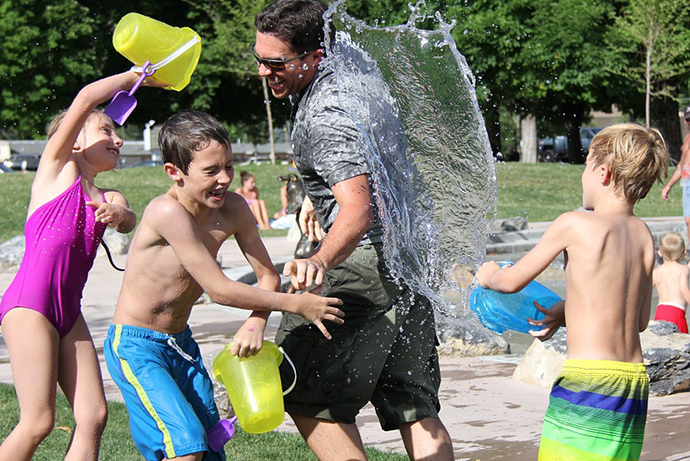Ask an Expert: Four Tips for Summer Safety
 Now that school is out, many families are heading outdoors for recreation and activities. Whether in the water or hills, the ballfield or backyard, precautionary measures should be taken so kids and all family members are safe from sun, insects and injuries. The Centers for Disease Control and Prevention (CDC) has a portion of their website dedicated to family health. A summary of their tips for family summer safety are included below. For additional information, click here.
Now that school is out, many families are heading outdoors for recreation and activities. Whether in the water or hills, the ballfield or backyard, precautionary measures should be taken so kids and all family members are safe from sun, insects and injuries. The Centers for Disease Control and Prevention (CDC) has a portion of their website dedicated to family health. A summary of their tips for family summer safety are included below. For additional information, click here.
Tip 1. Master water safety. Swimming in the pool and playing in the sprinklers are favorite summer activities. However, drowning is the leading cause of death among children ages 1 to 4. Water safety tips from CDC include:
- Always supervise children in or around water. A responsible adult should constantly watch young children.
- Teach kids to swim. Formal swimming lessons can protect young children from drowning.
- Learn CPR. Knowing this skill can be critical in a time of need.
- Install a four-sided fence around home pools.
- When boating, always wear a properly fitted life jacket.
Tip 2. Beat the heat and sun. Overheating and sunstroke can occur in healthy children, youth and adults if they participate in strenuous activities during hot weather. If someone shows signs of heat exhaustion or heat stroke, move him or her to a cool location and seek medical help. A list of specific signs is included on the CDC website. To avoid over-heating:
- Never leave infants, children or pets in a parked car, even if the windows are cracked open.
- Dress infants and children in loose, lightweight, light-colored clothing.
- Schedule outdoor activities in the morning and evening hours.
- Keep cool with cool showers or baths.
Also, just a few serious sunburns can lead to skin cancer in the years ahead. Tanning is the skin’s way of trying to protect itself from harmful UV rays from the sun. To prevent sunburn:
- Cover up. Clothing that covers the skin helps protect against UV rays.
- Use sunscreen with at least SPF (sun protection factor) 15 and UVA (ultraviolet A) and UVB (ultraviolet B) protection every time you and your child go outside.
Tip 3: Keep ticks and mosquitos from causing harm. Protect yourself and your family from bites and diseases. Zika, West Nile Virus and Lyme disease can all be transmitted by insects. To help with protection:
- Use an effective insect repellent. Products containing DEET, picaridin, IR3535 as well as some natural oils provide long-lasting protection.
- Some pesticides (acaricides) can reduce the number of ticks, but these should not be relied on for providing full protection.
- Check yourself and your children for ticks after being outdoors, especially if you have been camping or hiking. Instructions for effectively removing ticks are available on the CDC website.
Tip 4:Prevent injuries. Nearly everyone is more active and spends more time outdoors this time of year. Falls at home and on the playground are common sources of injuries and visits to the emergency room. To avoid injury:
- Make certain playgrounds are well maintained and have soft landing spots underneath.
- When participating in summer sports, be sure appropriate protective gear is used.
- Parents and teens should be able to perform basic first aid.
Enjoy fun in the sun, but remember to make safety a top priority so that summer is incident and accident free.
By: Kathleen Riggs, Utah State University Extension family and consumer sciences professor, kathleen.riggs@usu.edu or 435-586-8132


 Utah 4-H & Youth
Utah 4-H & Youth